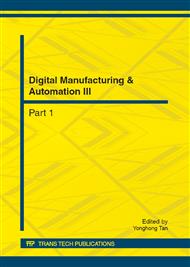p.666
p.673
p.679
p.683
p.688
p.693
p.699
p.705
p.710
Evaluation and Analysis of Temperature Uniformity for Planar Automotive Waste Heat Thermoelectric Generator
Abstract:
The present paper discusses temperature distribution of Thermoelectric Generator (TEG) using automotive waste heat , an index to evaluate the temperature uniformity of hot end box surface of TEG is proposed. Three-dimensional heat transfer model is established to simulate the temperature distribution on hot end box surface of TEG with computational fluid dynamic program FLUENT. The simulation result indicates that under the same topology of thermoelectric modules , the internal structure inside the hot end box could effectively improve the heat transfer between waste gas and hot end box, raising the hot end box surface average temperature by 7.2 percent from 534.2K of to 572.6K ; raising the temperature uniformity coefficient by 4.8 percent from 0.83 to 0.87, the result shows that the waste gas could be utilized more efficiently and generate more output.
Info:
Periodical:
Pages:
688-692
Citation:
Online since:
July 2012
Authors:
Keywords:
Price:
Сopyright:
© 2012 Trans Tech Publications Ltd. All Rights Reserved
Share:
Citation:


